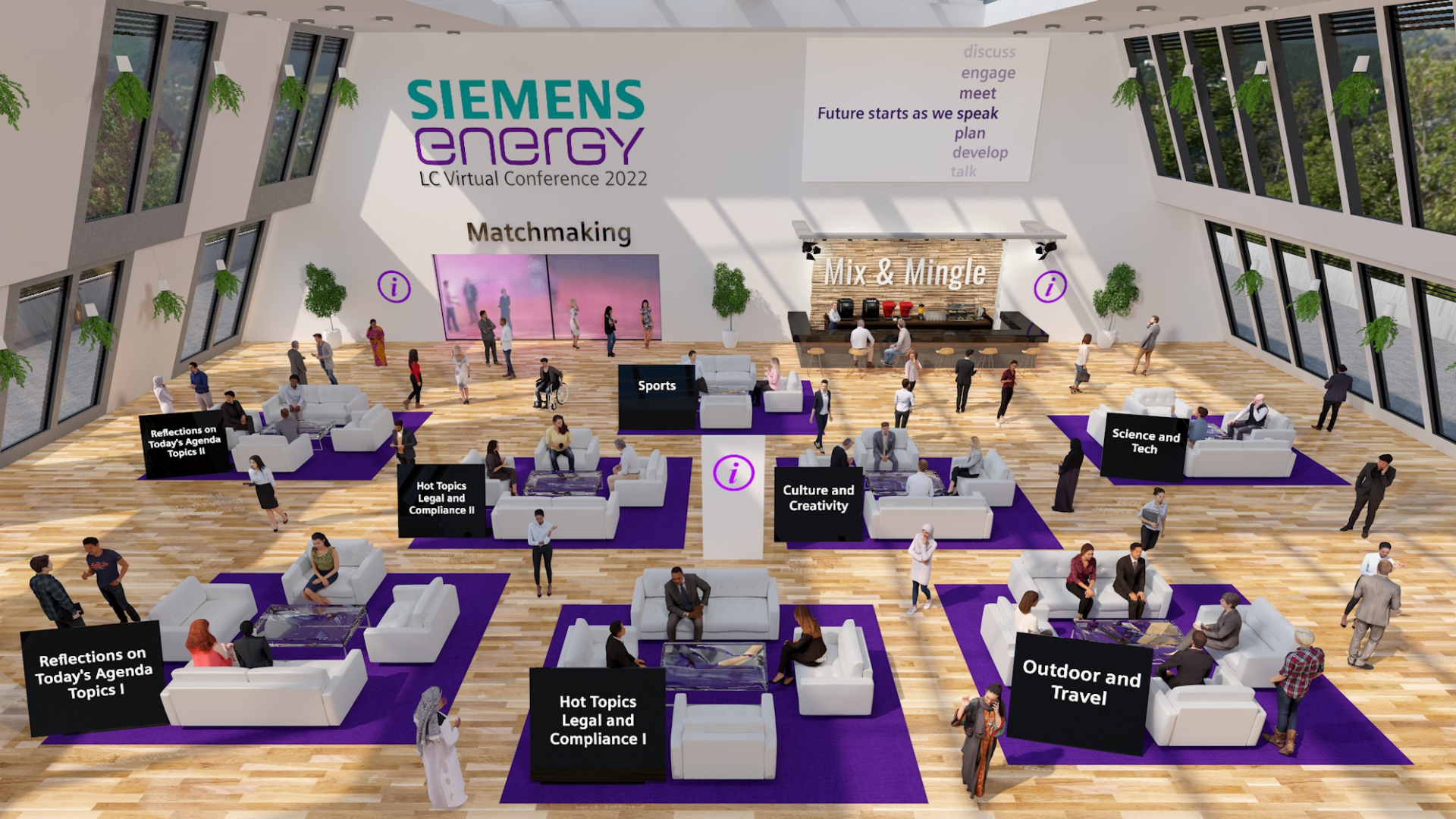From HR events and training sessions to sales kick-offs, virtual events have become a cornerstone for internal gatherings in the ever-evolving landscape of corporate events. There is a strong potential for significant returns on investment (ROI), but it’s crucial to leverage a platform that is dynamic enough to interrupt the pattern of daily Zoom or Teams meetings and deliver novel experiences within a diverse range of internal event types.
How do internal corporate events measure success?
Engagement
The success of internal corporate events is often measured by the level of engagement with the event’s content. Many virtual event platforms use interactive features including live streaming, panel discussions, and Q&A sessions to engage users with event content.Content Retention
Virtual events address this by allowing participants to access the content repeatedly from any location, at their own pace and convenience. Additionally, features like pre-roll, slides, screen sharing, and surveys enhance the learning experience and increase information retention.
Team Building
Team building is an integral part of many internal events, and can be particularly important for a remote workforce that may have limited opportunities to interact with one another personally. A virtual event platform must facilitate networking through various channels, including 1:1 and group chats, video networking, and topic-specific discussions.Research shows that well-executed virtual spaces are integral to building audience trust and that users evaluate the credibility of a website based on “surface characteristics” like design, interactivity, navigability, and download speed.
Creating a captivating virtual environment that reflects corporate branding will give the meeting a professional polish that ensures participants perceive the event positively.
How can you maximize these in a virtual event?
Connecting a Hybrid Workforce
Virtual events bridge the gap in a hybrid workforce, providing a platform for dispersed teams to connect seamlessly. MEETYOO enables this through integrated webcast technology, intuitive video networking interactions, and audience engagement tools that foster a sense of unity among participants, like collaborative games.
By providing especially remote employees with a rare opportunity to connect with their colleagues outside of a specific project or task, a virtual internal event has a unique value proposition for participants who want to develop relationships that can help them work better and develop professionally. This will in turn support the engagement, team building, and satisfaction metrics.
Delivering Education and Information
Virtual events enable education in a number of ways. The most common is through live streaming sessions, interactive panel discussions, etc. that allow for both one-to-many content delivery and collaborative group sessions. Sessions can be conducted live or prerecorded and delivered on demand.
These elements can be further enhanced by incorporating documentation like slides and checklists as well as interactive elements like games, live polls, or live Q&As. By essentially acting as a repository for event information and related education, virtual internal events are more accommodating to internal stakeholders, who can pursue the learnings at their own pace according to their own priorities. This added control gives them the ability to determine how to make the most valuable use of their time when it comes to both synchronous and asynchronous event engagement.
Facilitating Effective Networking
Interpersonal connections are a cornerstone of corporate events. Your virtual event platform should facilitate intuitive networking channels that follow paradigms that participants are already familiar with. For example, MEETYOO's platform supports various text and video formats and allows for group networking that can be used to create topic-specific, team-specific, or location-specific networking breakouts.

But in order to exceed networking expectations and keep participants within your virtual event environment, novel experiences can be extremely useful. For example, MEETYOO can also simulate the networking flows of physical events through attendee-to-attendee interactions wherein attendees simply navigate 2D virtual networking spaces. In this way, users can participate in or leave conversations by moving in and out of clusters of other attendees chatting.

Captivating Through a Virtual Environment
A detailed and immersive virtual environment ensures the event stands out from routine virtual meetings on platforms like Zoom or Teams. This keeps participants engaged and motivates them to explore the event’s offerings.

Going beyond standard video conferencing tools, MEETYOO offers bespoke virtual environments that can be used to underscore the theme of the event. For example, MEETYOO used a beautiful underwater scene to reinforce that participants were going on a “deep dive” into the Future of Digital Events.
These environments can also be customized to create branded, interactive, or visually stimulating elements that help users navigate the event and support event objectives. For example, you could include an image of a friendly company representative that beckons users to areas of interest, like an information desk where they can find essential information or a virtual activation where they can connect with their peers.

Ensuring Enterprise-Grade Security
Security is paramount in the corporate landscape where sensitive data is often discussed in various settings and over various technologies. It’s essential that an enterprise-grade platform guarantees the confidentiality and integrity of data and establishes a secure environment for internal events that allows companies to feature proprietary information with confidence.
What are the virtual event metrics you can use to demonstrate the ROI of virtual internal corporate events?
Granular Behavioral Data
Your virtual event platform should provide granular behavioral data, offering insights into participant interactions, engagement levels, and content preferences. This can take the form page views, clicks, impressions, “likes,” numbers of chats, numbers of connections, and even video view duration. This can indicate how much internal stakeholders paid attention to sessions, how often they accessed corporate training materials, and how well they used the opportunity to get to know colleagues in other teams or departments.
And because this data speaks to the reality of how (and how much) users engaged with the event, it not only helps to demonstrate this aspect of the event ROI, but also helps in refining future events to meet the specific needs and expectations of the audience.
Sentiment Data from Polls and Surveys
Polls and surveys within a virtual platform can be used to generate sentiment data, gauging participant satisfaction and opinions. A common version is through some version of a “how likely are you to recommend this experience to someone else?” rating (often termed the “Net Promoter Score” or “NPS”), but that is just one way to quantify participant satisfaction. Analyzing this data post-event enables organizers to identify areas of improvement and showcase the success of the event to stakeholders.
However, it’s important to remember to give participants an opportunity to expand on any score you ask for in an open-text question. This information can be vital to understanding the reasons behind the score and for actioning the sentiment data you collect later.
Testing Data from Quizzes and Event Games
Since education is a focal point for many internal events, it can often be difficult to gauge how well content was absorbed by a workforce during the event itself. This often relies on downstream data sources that might indicate the impact of the event on sales, operations, or other performance areas.

However, your virtual event platform can be used to help you determine the effectiveness of your content if it also functions as a testing apparatus. Both short and long-term retention can be established through quizzes within the platform that you distribute to event participants at the end of the event or even post-event. You can also make the evaluations less formal by couching them in event games that test participant knowledge about event content in a fun, competitive atmosphere. Event games can also act as an incentive to learn the material if the top performers stand to win prizes or social prestige.






